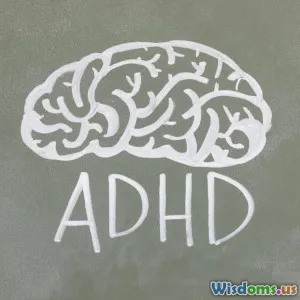
Debunking Myths About Dyslexia in Mainstream Schools
9 min read Uncover the truth behind dyslexia myths in mainstream schools and learn how to support inclusive education effectively. (0 Reviews)
Debunking Myths About Dyslexia in Mainstream Schools
Dyslexia has often been shrouded in misunderstanding and misinformation, particularly within mainstream educational settings. Although awareness has grown in recent years, many myths persist that hinder the ability of schools to adequately support students with dyslexia. This article dives deeply into these misconceptions, unpacking the truth, and offering clear guidance to educators, parents, and policymakers interested in creating inclusive classrooms where every child can thrive.
Introduction: The Power of Understanding Dyslexia
Imagine a child in your classroom excelling in spoken explanations but stumbling endlessly over basic reading or spelling tasks. You may witness frustration and hear phrases like “not trying hard enough” or “just needs more practice.” Unfortunately, these judgments are often rooted in myths rather than scientific understanding. Dyslexia is one of the most common neurodiverse learning differences, affecting around 10-15% of the population globally, yet misconceptions abound.
Far more than a challenge with reading, dyslexia involves differences in how the brain processes language. It is not a reflection of intelligence or potential. Recognizing and undoing the myths surrounding dyslexia in mainstream schools is essential—not only for compliance with education laws but because every child deserves access to teaching methods that work for their unique brain.
Let's explore some of the most persistent myths and uncover evidence-backed truths.
Myth 1: Dyslexia is Just Reading Backwards
The Myth: Many think dyslexic individuals read letters in reverse (for example, confusing 'b' and 'd').
The Reality: Letter reversal is a small and sporadic symptom that can occur in early learning among many children, not just those with dyslexia. Research indicates that dyslexia is primarily related to difficulties with phonological processing—the ability to recognize and manipulate sounds in language—not simply vision or letter orientation.
Evidence:
Neuroscientific studies show altered activation patterns in the left hemisphere’s language regions of dyslexic brains during reading tasks. This relates to difficulty mapping sounds to letters, rather than visual processing errors.
Real-World Insight:
Early educator Sarah Martinez shares, “Understanding phonological awareness as the core struggle changed how I supported my dyslexic students, shifting from drilling ‘correct letter forms’ to sound-based decoding exercises.”
Myth 2: Dyslexia Equates to Low Intelligence
The Myth: Dyslexia is often mistakenly considered a sign of intellectual disability or low academic potential.
The Reality: Dyslexia correlates with average to above-average intelligence. Intellectual capacity and dyslexia are independent factors.
Facts and Examples:
Some of the world’s most brilliant minds are understood to have had dyslexia, including Albert Einstein, Pablo Picasso, and Steven Spielberg. They showcase that creativity and intelligence are not limited by dyslexia; often, dyslexic minds bring unique problem-solving and innovative thinking styles.
The International Dyslexia Association emphasizes, “Dyslexia is defined by difficulties with accurate and/or fluent word recognition and by poor spelling and decoding abilities. These difficulties typically result from a deficit in the phonological component of language and are unexpected in relation to other cognitive abilities.”
Myth 3: Dyslexia is Rare and Hard to Detect
The Myth: Some educators and parents view dyslexia as an uncommon condition that requires complicated tests.
The Reality: Dyslexia affects approximately one in every ten individuals. While formal diagnosis ideally involves specialists, early signs can and should be recognized by trained teachers within mainstream schools.
Signs to Watch For:
- Difficulty rhyming words
- Trouble recognizing common sight words
- Slow or effortful reading skills
- Frequent spelling mistakes, especially inconsistent ones
- Struggling to connect sounds to letters
Data:
According to the U.S. Department of Education, up to 80% of students with specific learning disabilities identified have dyslexia or related reading difficulties.
School Implementation:
Some schools have efficiently used universal screening tools for early literacy skills. For instance, the Reading First initiative promotes early detection strategies, enabling prompt intervention without waiting for formal diagnosis.
Myth 4: Dyslexia Can Be Cured if Kids Try Harder
The Myth: There’s a misconception that with sufficient effort or practice, dyslexia can be 'fixed.'
The Reality: Dyslexia is a lifelong neurological difference. While it cannot be cured, targeted, evidence-based interventions can empower students to become confident, skilled readers.
Research-Based Interventions:
Multisensory Structured Language Education (MSLE), such as the Orton-Gillingham approach, has been shown to significantly improve decoding and spelling skills by engaging visual, auditory, and kinesthetic learning pathways.
A meta-analysis published in the Annals of Dyslexia (2020) found strong support for structured phonics instruction tailored to dyslexic learners’ needs.
Inclusive Approach:
Trying harder without appropriate support often leads to frustration and demotivation. Emphasizing adaptation, not just effort, benefits student outcomes.
Myth 5: Mainstream Schools Can't Adequately Support Dyslexic Students
The Myth: Many believe that only specialized schools can effectively educate children with dyslexia.
The Reality: With proper training, resources, and inclusive policies, mainstream schools are perfectly capable of supporting dyslexic learners.
Integration Success Stories:
The Anna Kennedy Online Learning school in the UK, catering to neurodiverse learners within a mainstream framework, reports improved academic confidence and morale among dyslexic pupils.
The UK’s Special Educational Needs and Disabilities (SEND) Code of Practice guides mainstream schools to provide individual support plans that accommodate dyslexic needs without segregating learners.
Key Strategies For Mainstream Schools:
- Professional development for teachers on dyslexia-inclusive strategies
- Personalized learning plans
- Use of assistive technology (text-to-speech, audiobooks)
- Structured literacy programs
- Flexible assessment methods
These approaches foster equity and allow dyslexic students to participate fully alongside their peers.
Conclusion: Moving Beyond Myths for Inclusive Excellence
Dispelling myths about dyslexia in mainstream schools is more than an academic exercise—it is an urgent challenge affecting millions of children worldwide.
Understanding the true nature of dyslexia dismantles stereotypes that limit students’ opportunities and self-esteem. Recognizing that dyslexia stems from specific language processing differences—not intelligence or motivation—shifts educational responses toward accommodation and empowerment.
Policymakers, educators, and parents must commit to inclusive practices rooted in scientific evidence. Early identification, targeted interventions, and ongoing support can transform barriers into bridges.
The ultimate goal is to foster classrooms where every learner, regardless of neurologic variation, is valued and given the tools to flourish. Only by abandoning outdated myths can the full potential of dyslexic students be realized, making our schools, communities, and futures richer and more just.
References
- Shaywitz, S. E. (2003). Overcoming Dyslexia. Knopf.
- International Dyslexia Association. Framework Document: Dyslexia Definition.
- Fletcher, J. M., Lyon, G. R., Fuchs, L. S., & Barnes, M. A. (2019).Learning Disabilities: From Identification to Intervention. Guilford Press.
- Rose, J. (2009). Identifying and Teaching Children and Young People with Dyslexia and Literacy Difficulties. The Rose Report. UK Department for Education.
- Torgesen, J. K. (2005). Recent discoveries from research on remedial interventions for children with dyslexia. School Psychology Review.
Rate the Post
User Reviews
Popular Posts
















